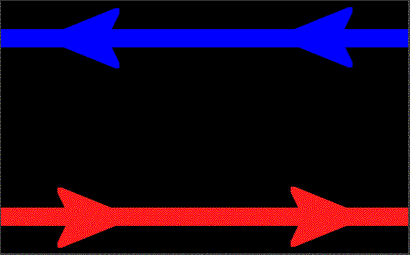
Girl: Look at the gorgeous sun! Isn’t it lovely? Doesn’t it fill your spirit with so much joy?
Boy: We just had a couple of Earth-directed coronal mass ejections today. That means that between now and July 19, 2013, it’s gonna hit us. Ask me again in three days and if I don’t answer my cell phone, don’t blame it on me. Blame it on the sun knocking out our satellite communications.
So it’s finally here, summer of 2013, the predicted time when old Sol will hit the solar maximum. This means we are approximately halfway through the eleven-year cycle. This cycle starts with a minimum and ends with a minimum. In between these minimums, there is a peak, the maximum. Since the sun’s activities seem to have increased more than usual as compared to the last five-and-a-half years, scientists are tentatively calling this summer the summer of the solar maximum. And as the boy in the above picture says, we just got a doozie of a mass ejection today.
The sun, unlike a big lump of clay, has plasma and magnetic fields so it rotates at different speeds and different directions when measured at various depths and latitudes. All these different speeds and directions cause plasma and the magnetic fields to criss-cross, and get all tangled up. Since Sol doesn’t like to get that kinked up, he usually sorts himself out by reconfiguring all those tangled magnetic lines, exchanging and mixing up those lines to form new lines, and then straighten those new lines into new formations.

Once the lines are no longer tangled, the magnetic lines SNAP back into place, like a rubber band. It is that SNAP which releases huge amounts of energy and light called Coronal Mass Ejections (CMEs)[1]
But CMEs are not all the same. Small CME flashes are called solar flares. They are brief and don’t have the power to penetrate Earth’s multi-layered magnetic field. Huge CMEs however, are another thing. They are not flashes. They are big blobs of charged particles—a billion tons of plasma, and they have the force and weight behind them to travel great distances at speeds that approach 8 million kilometers per hour.
These CMEs are the full force of the sun, coming right atcha. They have the energy to melt power transformers, knock out communication satellites, and disrupt GPS. In essence, we would be blind, deaf, and mute, all at the same time (and on top of that, I would get lost if I happened to be on the road, trying to follow Siri’s directions). [2]
The last time one of these huge plasma clouds hit Earth was back on September 1, 1859. That CME fried all the telegraph cables and caused sparks and fires at telegraph stations. We haven’t seen anything like that ever since, but to be on the safe side, try to resist the urge to sunbathe for the next few days. Your body will thank you for not subjecting it to all that cancerous radiation.
Let’s hope this one is a nice mild one.
…
1. July 16, 2013 – The Sun Erupted With An Earth-Directed CME
2. Here comes the solar maximum: What we know – and don’t know – about solar storms and their hazards


Leave a comment